In a year like no other, Berks Countians have found themselves – like everyone else on the globe – anchored in home port. Ensconced for such long periods indoors, we see our surroundings with much more intimacy. The objects of our lives are present with relevance we likely have taken for granted.
Doing more cooking? How about that potato masher that was Grandpa’s? Or maybe that serving platter that belonged to your great Aunt Nettie?
How about those wall hangings that have been with you since your first apartment or maybe those vases or bowls gifted at special times by special people?
Then there are those items that have adorned you personally.
From your wedding ring to your grandmother’s brooch to a special bracelet from that first love, chances are the emotional ties to those pieces remain strong.
Tangible objects all. Still, the feeling that went into the design, creation and use of these objects provides a personification that remains palpable.
Berks is blessed with artisans who create beautiful objects that carry on traditions that both connect generations and channel souls through them. As summer wanes and autumn awaits, now may be the time to consider complementing your veteran sentimental collections by adding new items. Consider these innovative artists and their wares.
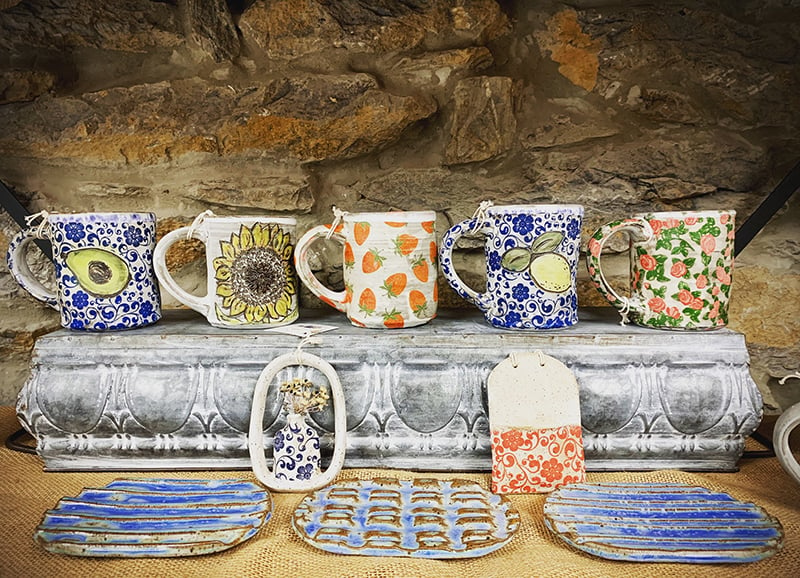
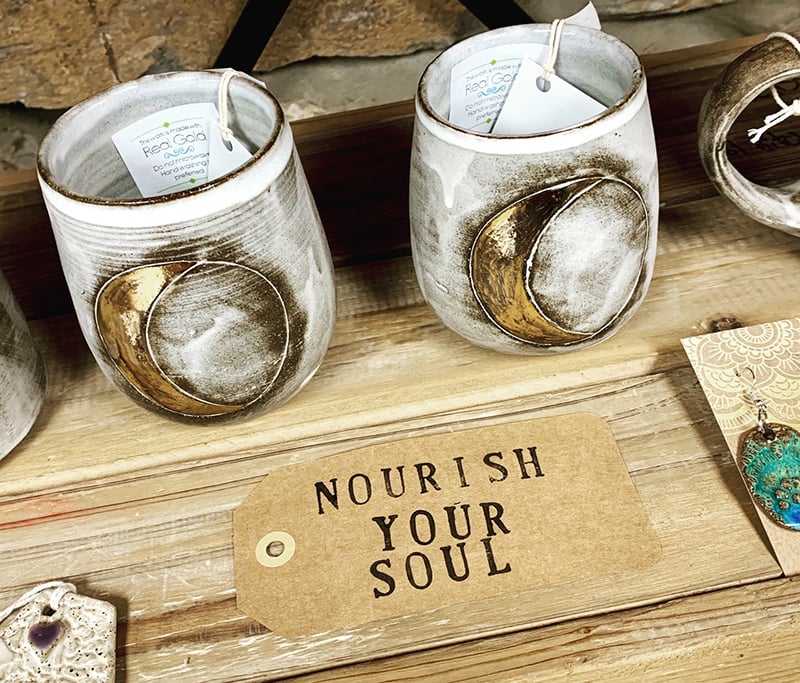
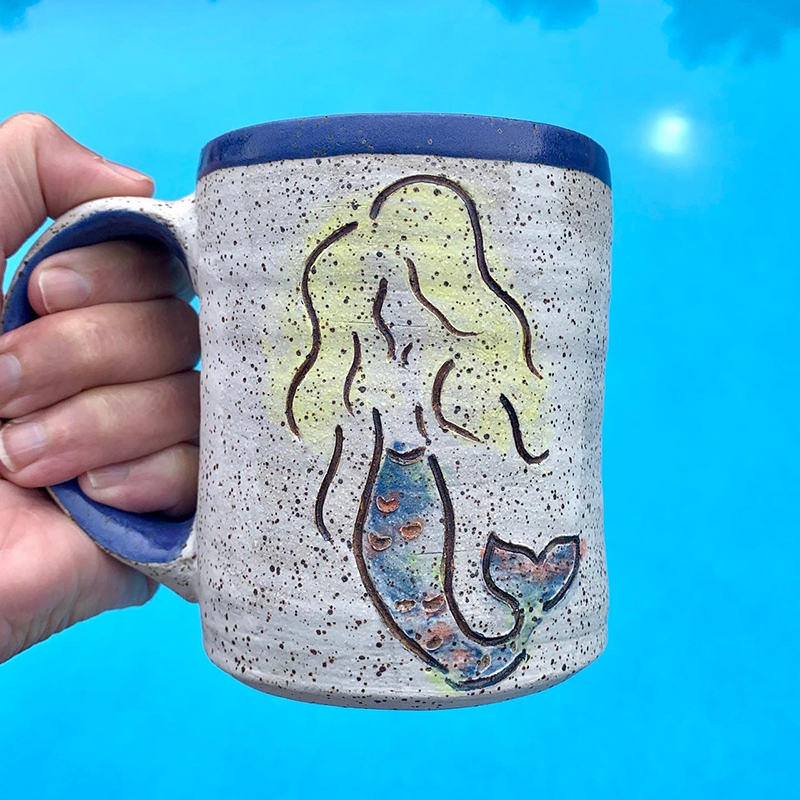
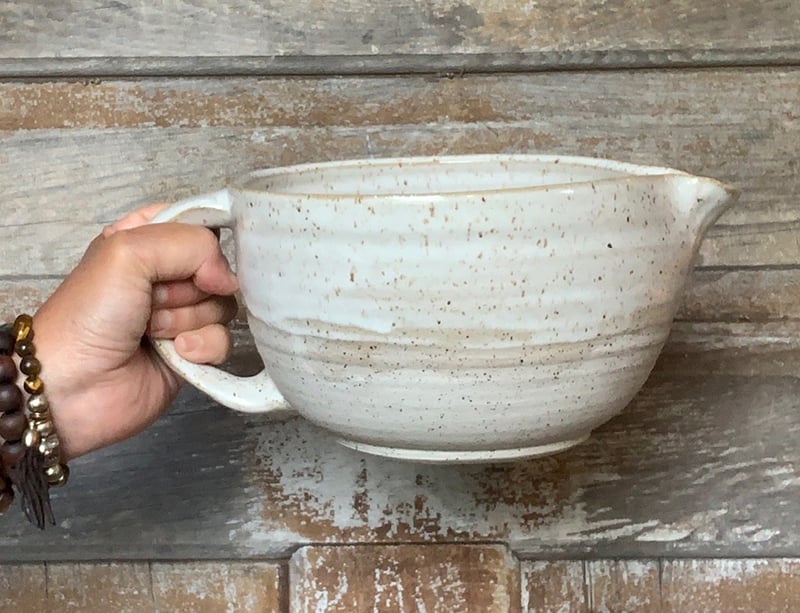
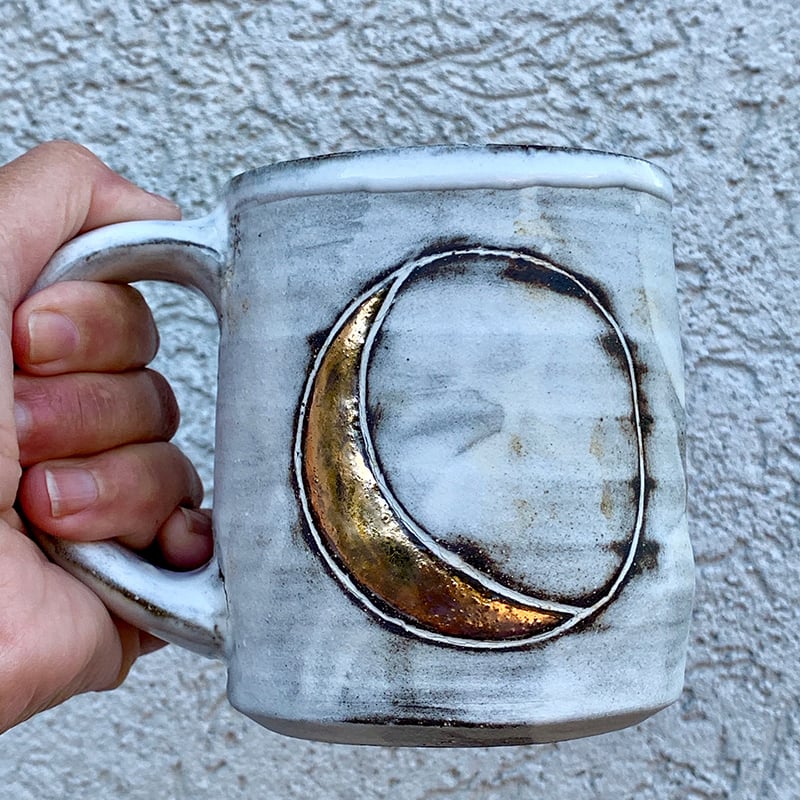
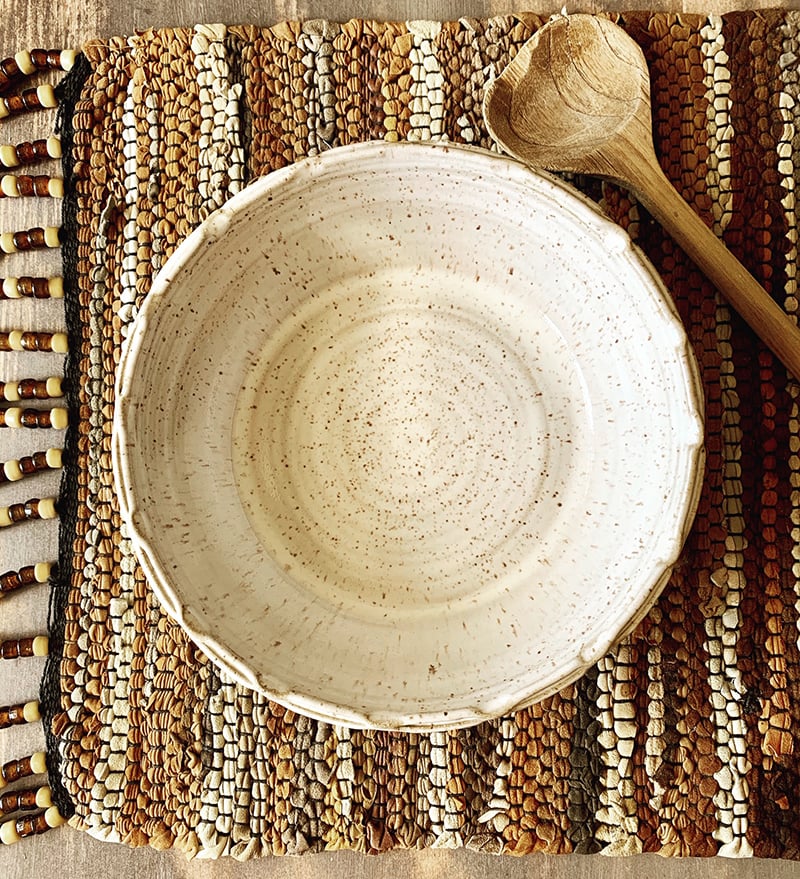
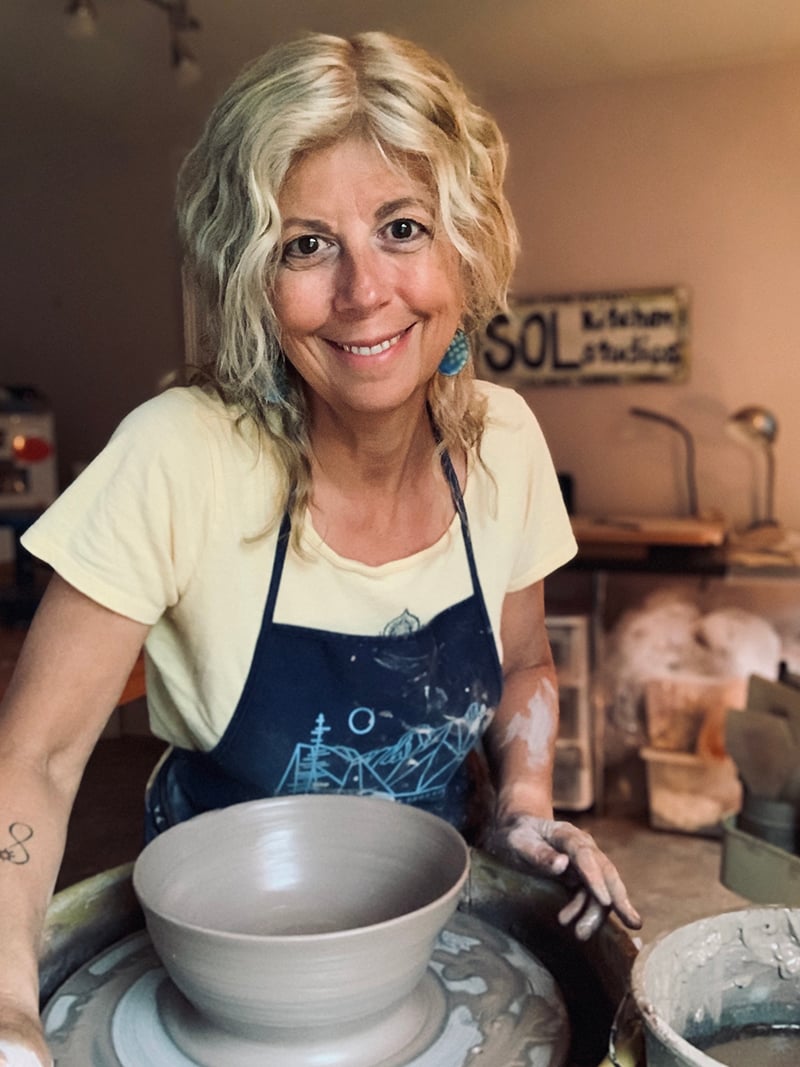
Sol Kitchen Studios
For most folks, a guest bedroom is something that’s not necessarily in use each day. But for Melissa Harris, owner of Sol Kitchen Studios, the guest room in her Nolde Forest area home serves as the creative base for her innovative clay pottery.
Harris, a retired Wilson School District elementary teacher, developed her interest in pottery early on. Growing up on Long Island, NY, Harris’ parents had a ceramic studio back in the 1970s.
“It was one of those hobby, day out, kind of things that appealed to stay-at-home wives back then,” she recalls, noting the pre-made molds that turned out standard ceramic bowls, vases and knickknacks.
Those once-ubiquitous display items are a far cry from what Harris creates today through her Sol Kitchen Studios.
“My goal is to make functional vessels people can use in their daily life,” she says. Most of her items center on food and beverage serving and consumption. “I love to cook and feed people, and that’s why I do this, to enhance that. I want to create an entirely different experience from commercial things.”
While Harris creates a variety of items (some 500 annually) such as drinkware and bowls, she has recently branched out into tiles, some two-dimensional art, vases and pocket vases, all of which derive inspiration from food. She’s currently working on developing a taco holder, nodding to the popular food trend. Her most popular, perhaps really signature, items are her handcrafted mugs.
On solkitchenstudios.com, Harris terms her gallery of creations “Mug Love.”
“My biggest sales are my mugs; they are my potter’s calling card,” she says. “I want somebody to use the mug every day…several times a day…from coffee in the morning to beer or wine at night.”
In making them, Harris employs a variety of techniques to create both the original designs as well as the exterior texture. “My surfaces are the coexistence of age and beauty, imperfect age and beauty,” she says of the clay vessels fired in her basement kiln after receiving a coating of her homemade glazes.
Harris’ mugs are a study in texture, style and design. They range from traditional shapes to tall and narrow to soup-bowl size. Designs include calming and striking abstracts, flowers, trees, polka dots, hearts and some with messages. The texture varies and provides a tactile experience missing in smooth-surface commercial mugs.
She considers her studio a working periodic chart as she incorporates natural materials such as silica, manganese, calcium and cobalt into her glazes. It is not lost on Harris the usage of pottery through the ages.
“It’s our humanity, our evolution as a species turns as our pottery does,” she says. Every potter, from ancient times to her contemporaries, leave a trace of themselves in their work.
The clay, she notes, comes from the earth. As an item is shaped, the artist puts his or her brainpower into the design and muscle power into the turning or handcrafting.
“Every gesture leaves a record in the clay,” she says. “It’s a touch on history, in the meditative moments, working slowly; for me it’s very spiritual.”
Harris got hooked on her pottery passion by taking a GoggleWorks course years ago. She’s since studied with potters she’s admired including at Haystack, as well as at Studio Alluvium, Idyllwild Arts and Allison Palmer Studio. She’s also looking to take classes in Kurinuki.
She took a “pottery boot camp” in Deer Island, ME, with expert potters from North Carolina.
One of 11 talented siblings, Harris gives much credit to her parents, now 83 and 85, and still living in Long Island, in encouraging and nurturing their childrens’ creativity. She’s thankful that Willie, her husband of three-plus decades, kindly acquiesces to her takeover of the house in her potter’s quest. Items are displayed throughout the house and the kiln and glaze-making operation is in the basement.
Harris’ Sol Kitchen Studio creations are available at The Mint Leaf and at Soul-Centered Wellness, both in Bern Township, and the gallery space at Double Sunrise Yoga in West Reading.
She encourages others beginning their pottery-making journey to focus on the art. “Keep learning and working,” she says. “Persevere. That’s the most important thing.”
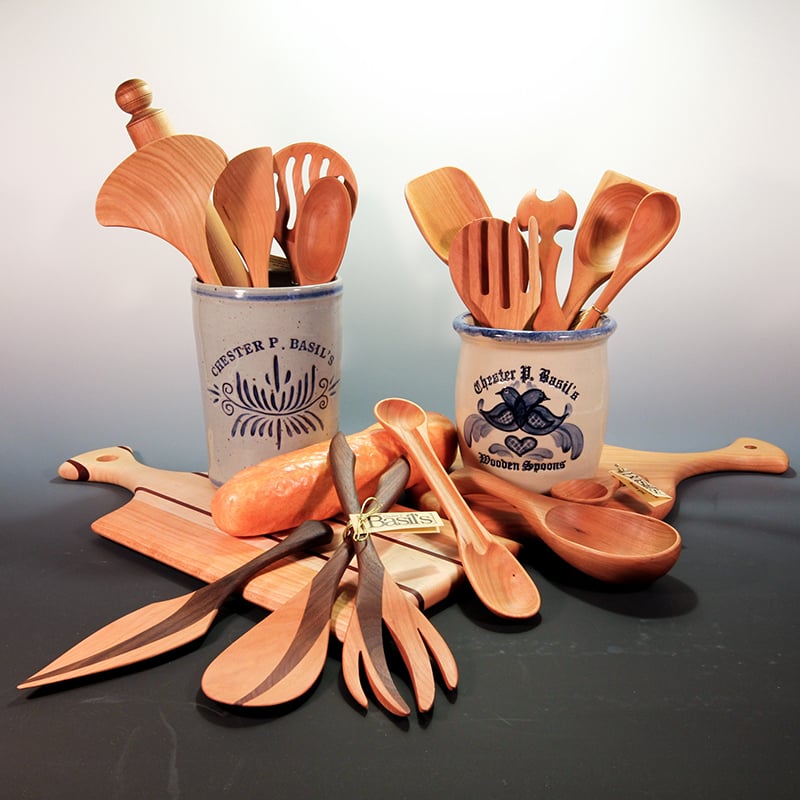
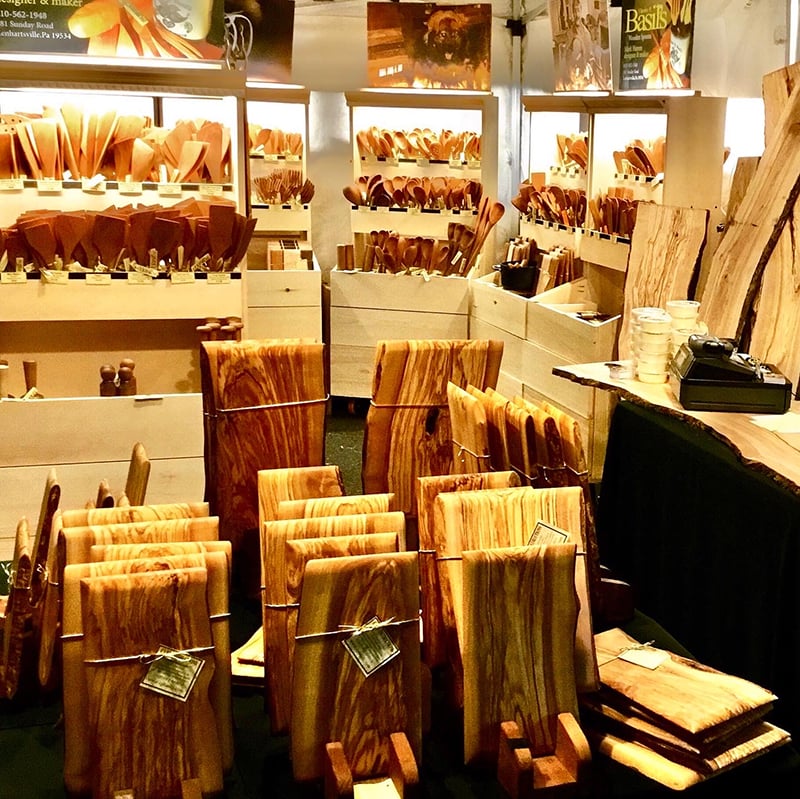
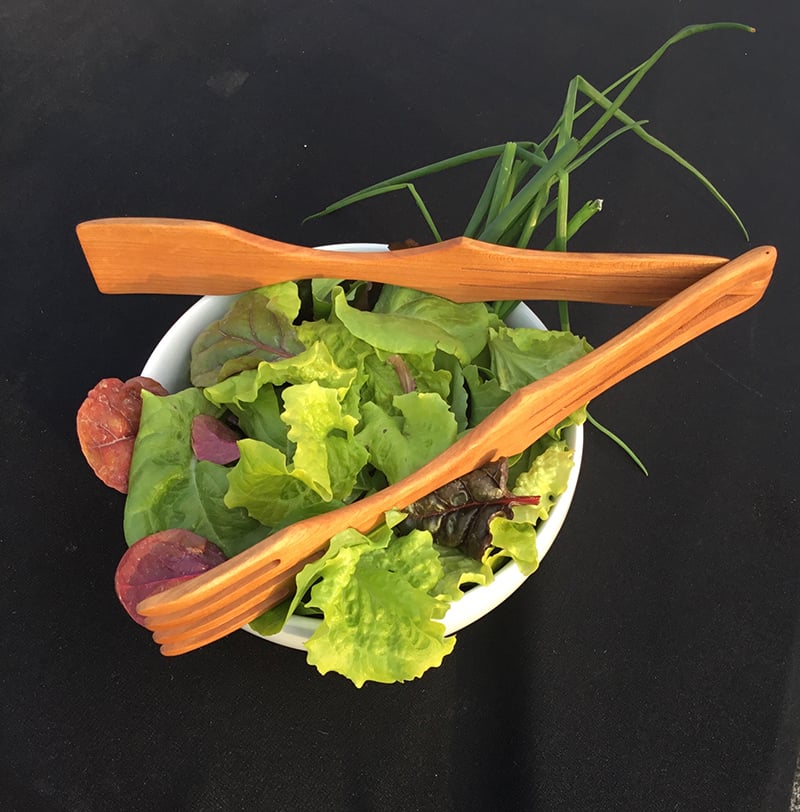
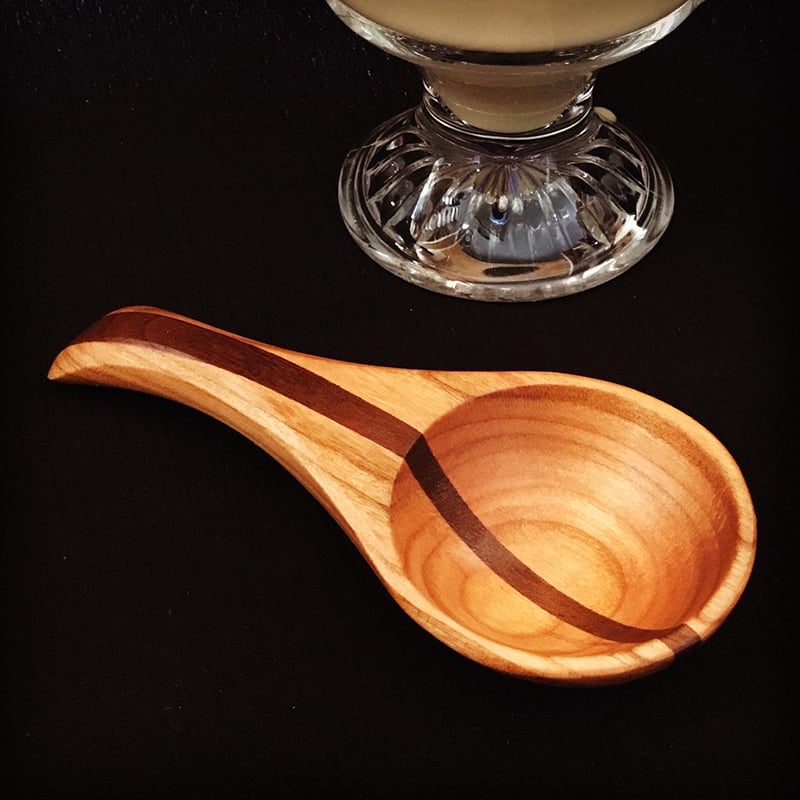
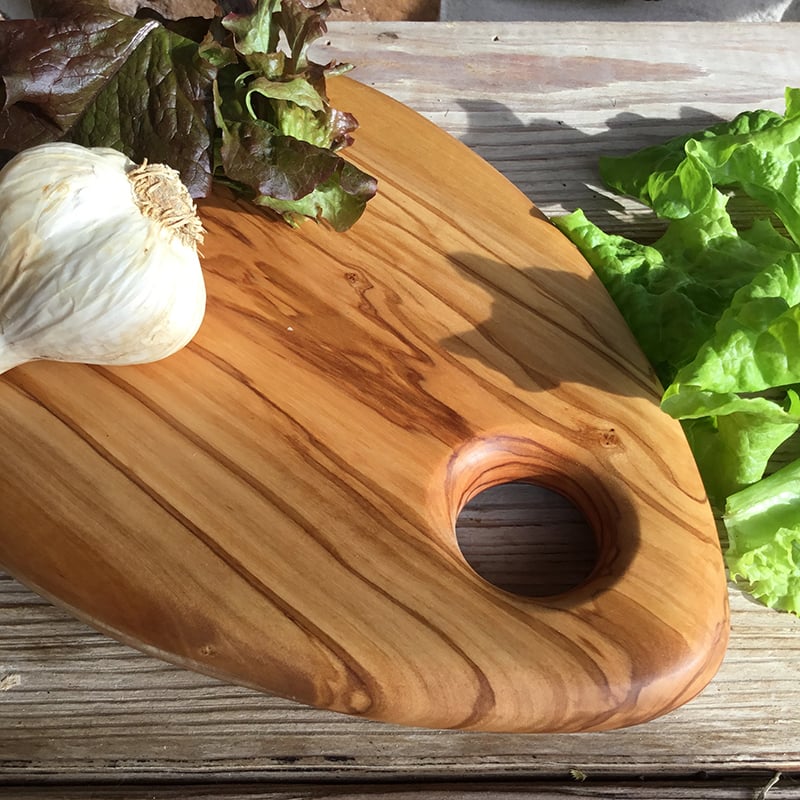
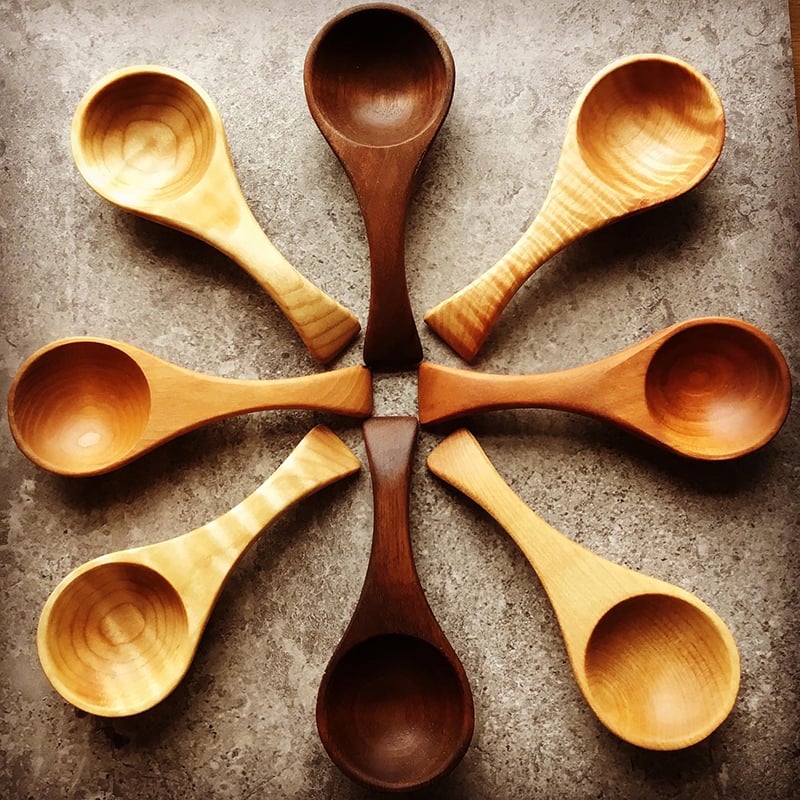
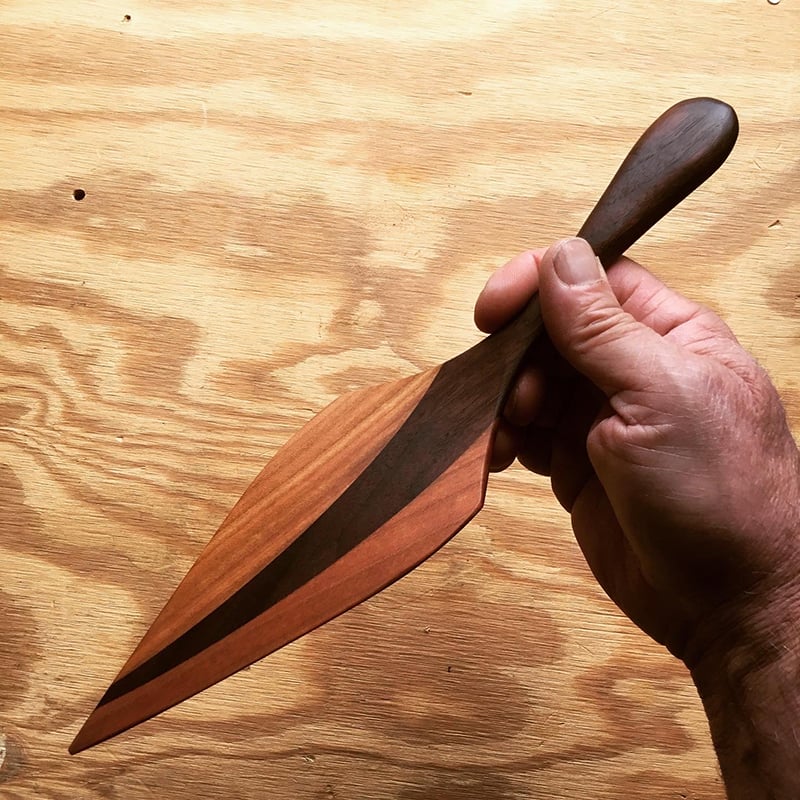
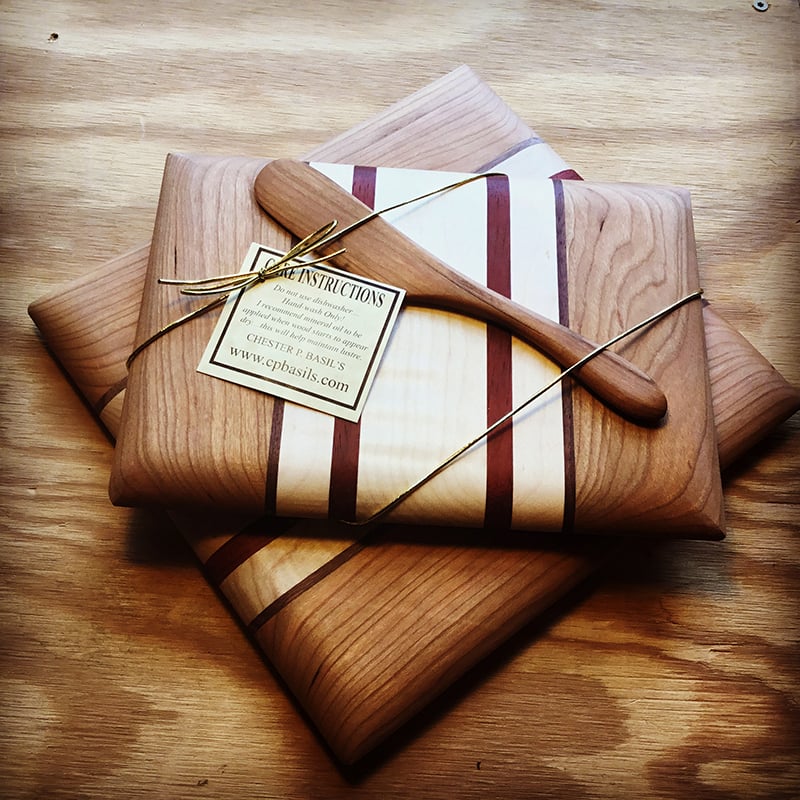
Chester P. Basil’s Wooden Spoons
When it comes to wooden spoons, you may think there’s none as good as the one your mom used. And, maybe, along the way, it’s been lost to time or become pretty decrepit and needs companions for 21st century cooking methods.
There’s no better maker of hand-hewn and crafted wooden spoons and complementary wooden kitchen accessories around than Chester P. Basil's. But if you’re in search of Chester in the Lenhartsville area, be advised: you’ll never find him.
Chester P. Basil doesn’t exist, but the artisan who christened his business with that intriguing moniker does, and his name is Mark Hamm. You can find his items in-store in Kutztown at 16 N. Whiteoak St.: Collene’s Crafts & Flowers.
The business name is as unique as his products. Chester, says Hamm, honors an old neighbor from his childhood, a “talker” who loved both Chesterfield Ale and Chesterfield cigarettes. The “P” is for perseverance, a necessity for any business person. Basil stands for Hamm’s favorite spice.
“I wanted a fictious title because if you eventually want to sell your business, that’s a necessity,” he admits.
But, for the foreseeable future, what Hamm has in the marketplace is an inventory of appealing food-service utensils and trays. All are handcrafted out of domestic cherry and imported olive wood.
Hamm, who can trace his roots back 13 generations in Albany Township, has been hooked on wood working since childhood. His dad had a wood shop in the family’s basement. Among Hamm’s first efforts were Adirondack baskets shaped entirely of hand-split oak trees.
He then apprenticed in what he terms “a sweat shop” with a spoon maker who identified all the products as his own. Hamm learned a lot – enough, in fact, to start crafting wooden spoons and utensils for his own business.
Now, for the better part of three decades, Hamm has been turning out hand-crafted wooden spoons, wooden cutting boards and wooden spatulas. The modest price range of the items – the majority cost between $4 and $35 – enable their beauty and functionality to be widely experienced.
Hamm’s website, cpbasils.com, features scores of his creations. While his trademark spoons (in many styles) are the stars, customers can also shop for measuring, soup and chili spoons, coffee scoops, icing knives, strainers, spoon rests, board scrapers, cooking forks, chopsticks, rolling pins and cutting boards, honey dippers, mashers, tossing and serving utensils and much more. Virtually all of these are crafted from native northwestern Pennsylvania cherry wood, which is reasonably priced and fairly easy to source.
“I like to say: Pennsylvania grown, Pennsylvania made,” Hamm says.
But now his unique cutting boards are primarily crafted out of olive wood, which is far from local and far from cheap. He got hooked on the olive wood a couple of years back when he saw the wares of a vendor at the Bethlehem Christkindlmart.
“The guy was there with stuff imported from Tunisia,” he recalls. “The wood was so beautiful; I couldn’t get it out of my mind.”
The expense of the olive wood bought in small parcels was huge. So, Hamm decided to buy a lot in bulk from Italy – a feat in itself. The import licensing background checks were conducted by the Federal government, a necessity because the olive wood is shipped in sealed containers. Eventually, the mission was accomplished, and Hamm was ready to work. He shares his Lenhartsville area studio with his three canine helpers, stars of sorts who were once featured on an Animal Planet cable television show.
“I see myself working on olive wood extensively over the next 10 years,” he says. “It got me revitalized again. It is so visual due to the graining and the color variations. It is neat stuff to work with.”
Like other artisans, Hamm found himself afflicted by the business downturn resulting from COVID-19. Traditionally, 90 percent of his annual sales are realized at the 15 or so large regional craft shows he attends. As of early July, only five were still scheduled, pending the uncertainty of the pandemic’s spread.
Hamm’s production is based on sales trends at those fairs.
“I have boxes and boxes of spoons as I work ahead,” he says. “Each year I track what is selling, what people are buying, and then I do a projection for the next year.”
He does craft some custom pieces, but not many. His buyers clearly relate to what he does create as 70 percent are repeat customers.
Hamm says each piece he crafts carries a part of him.
“For me, with the final shaping of a spoon or another object, my goal is always to make it better the next time,” he says. “It’s the process – working on it. Especially with the olive wood, where there are lots of cracks. It’s a challenging wood that yields beautiful results.”
Hamm credits the pandemic, and the festivals, as a time for reflection.
“The big advantage was to slow down and see things around us change: see the blossoms and the sky so blue without the contrails of jets,” he says.
By mid-summer, sales were actually up for Hamm, and part of that may be due to folks staying home and cooking more. Spoons and other items became popular gifts, accessed often through his website or storekeepers who stock his wares.
“People became more conscious of foods and eating,” he reflects, adding: “It would be nice if people were more conscious of what they’re eating.”
Does Hamm have a favorite spoon type? He sure does. Called a French tasting spoon, it’s a two-headed spoon with one end for tasting and the other for stirring.
Hamm looks forward to more interaction with his fellow crafters and the public. Meanwhile, he ploughs through, knowing when to step back from the woodworking that takes a toll on his hands and shoulders.
“I know when to take a break and a good cup of coffee works wonders,” he says.
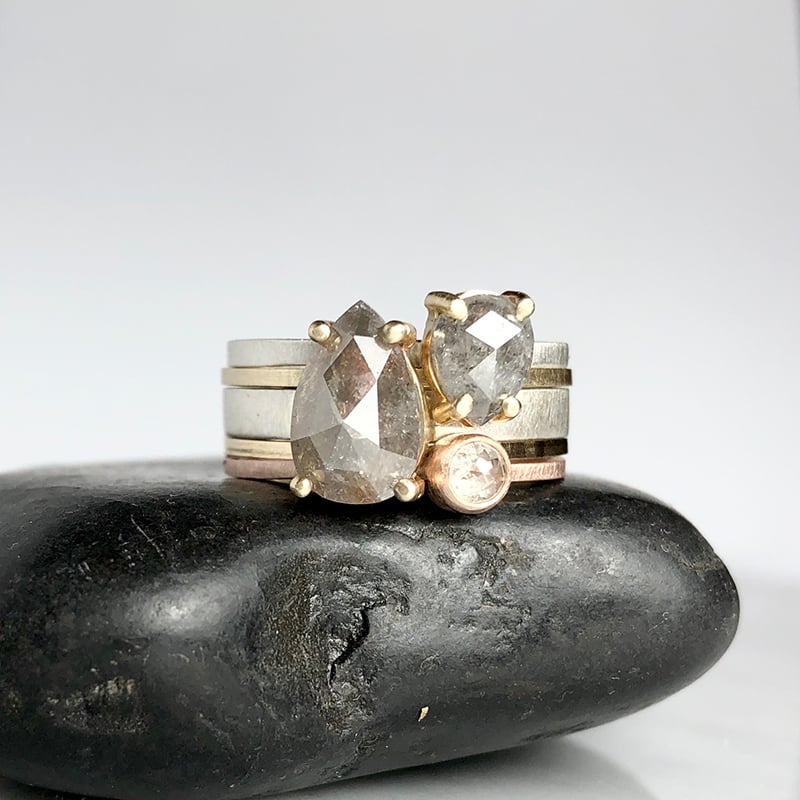
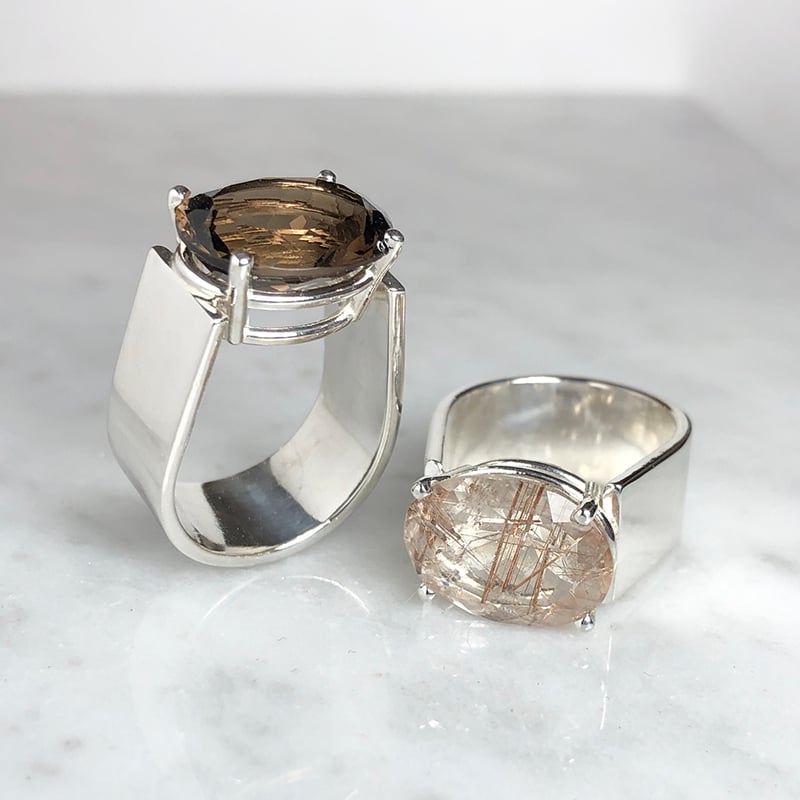
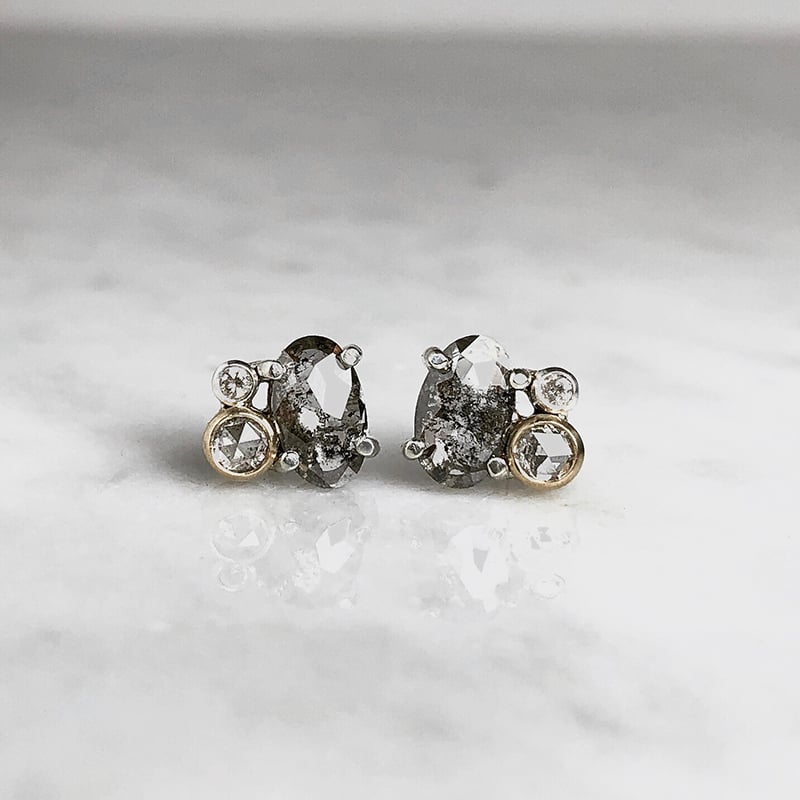
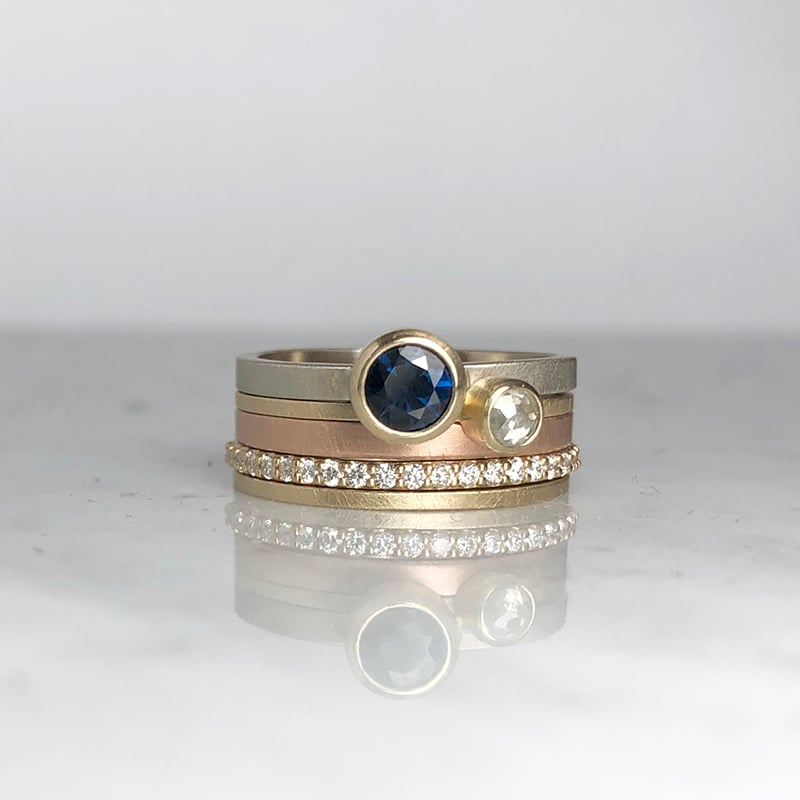
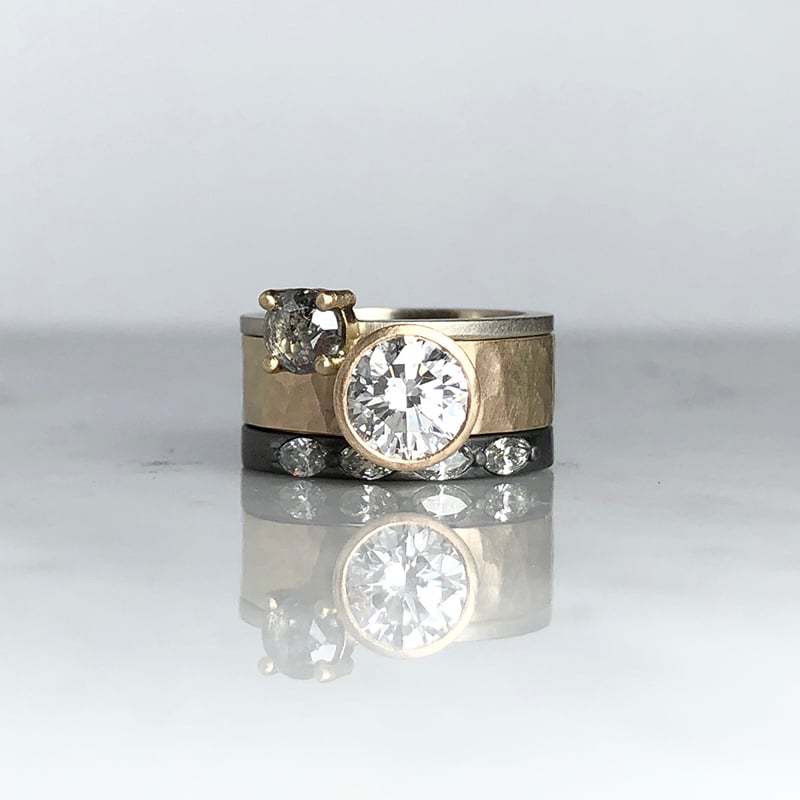
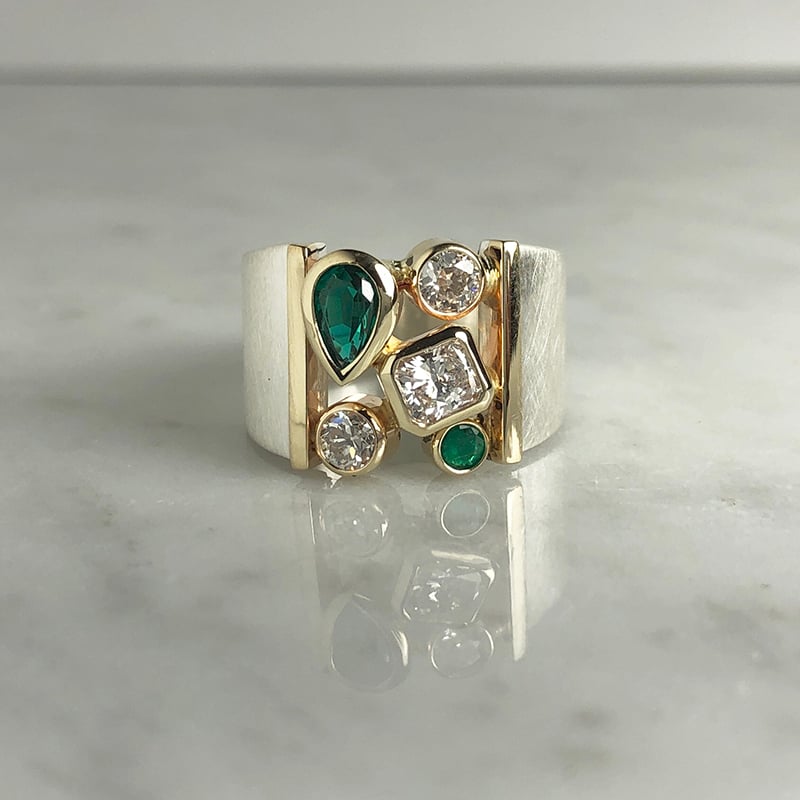
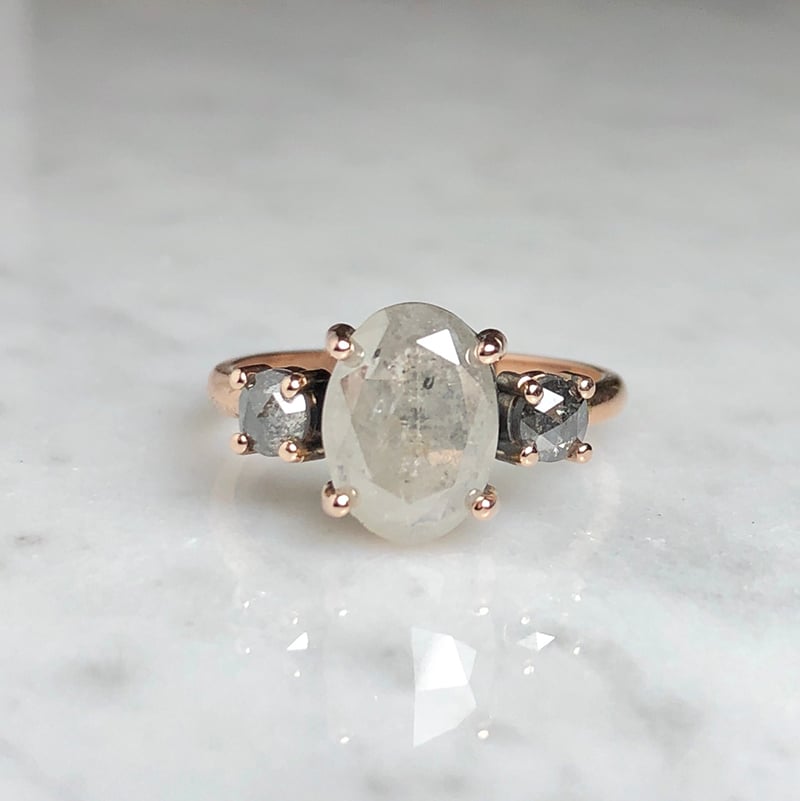
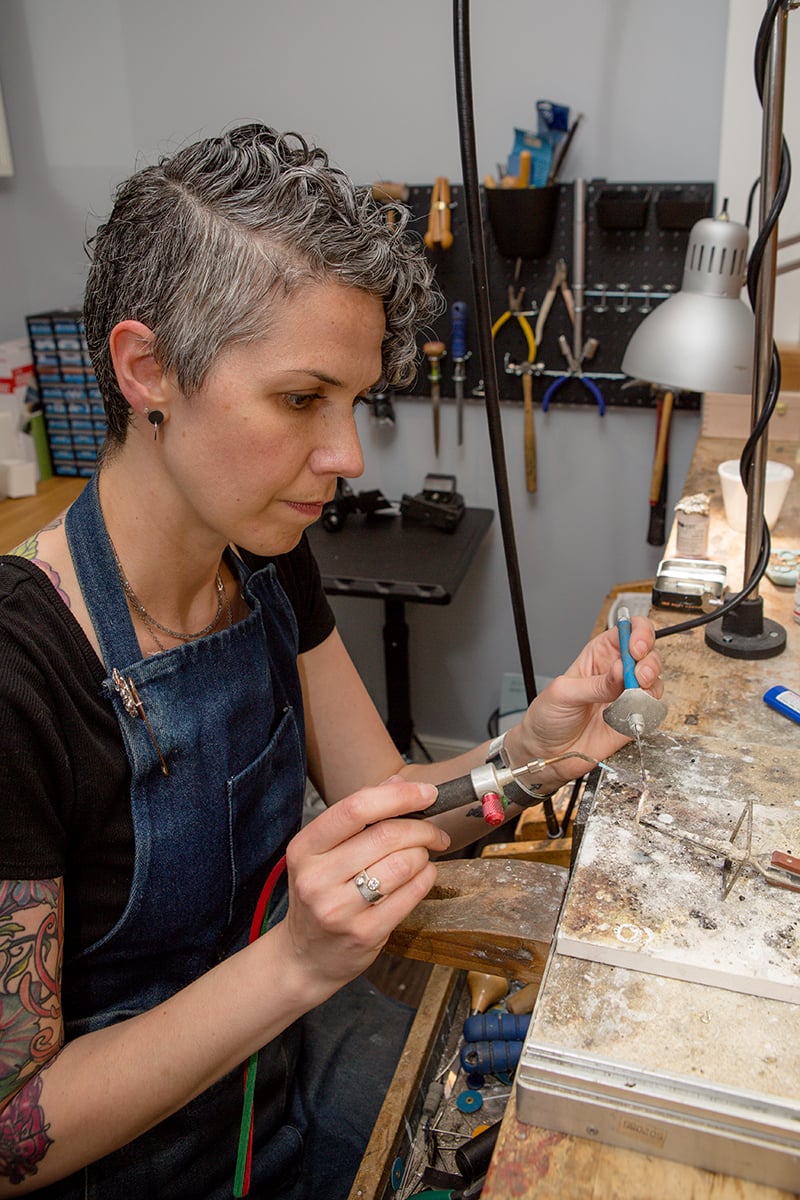
MADE Jewelry Boutique and Studio
Some folks are born artists. And then there are those immersed in artistic communities from birth. Count Chrissy Cook, proprietor of West Reading-based MADE Jewelry Boutique and Studio among the latter, having been raised in Mount Gretna, a renowned artistic haven in neighboring Lebanon County.
“I don’t think I had a chance,” she laughs. “Had I not been exposed to that, I wouldn’t have believed I could be a full-time working artist. It was a gift.”
That “gift” unwrapped a talented jeweler whose stunning, cutting-edge pieces have found fans among many millennials and Gen Xers as well as among nonconformist boomers. Her signature style embraces mixtures of metals and rough gem stones – primarily diamonds – sourced ethically and designed to be different.
Cook’s interest in jewelry design and making grew amongst her surroundings. She took as many art classes as possible in high school, adopting jewelry making as a hobby, continuing her studies at the Pennsylvania College of Art and Design in Lancaster.
From there, she took off for a year of studies at Central Saint Martins University of the Arts in London where she took a particular interest in accessories and design. “It provided me with a change of perspective,” Cook says.
Back in the U.S., she traded school for real-life experience, taking a position with the respected Parkhill Jewelers on Prince Street in Lancaster.
“I was an apprentice, then offered a full-time job,” she says. She learned the dynamics of working with precious metals and high-end gems, as well as the business side of the art and the importance of customer service and interaction.
As time passed, Cook knew she wanted to step out on her own. She became a licensed goldsmith working at a Spring Township establishment, but concentrated on creating bold and funky silver designs and exhibiting them at art stores.
“I’ve always been very non-traditional in ideas, dress and taste, and my jewelry is no exception to that,” she says. “I want [to create] something no one else has that is special and sentimental. The goldsmithing and fine jewelry work paid the bills, but I wanted to combine all the skills into one.”
On her way to founding MADE, her journey would include marriage and motherhood. She and her husband, a Reading School District employee, found a Victorian home in Centre Park, Reading, a city neighborhood known for its Bohemian vibes.
In short order, Cook found the 512 Penn Avenue property in West Reading which had previously housed another independent jeweler. With an income-producing property upstairs, it was the perfect site for MADE.
But a year after setting up shop in 2016, a devasting fire struck. Faced with the economic realities of rehabbing the property, the couple chose to sell their beloved city home and move into the renovated apartment. Again – and happily – Cook found herself living in another lively artistic and commercially diverse community. The icing on that cake was having more one-on-one time with her daughter and spouse.
Her wares appealed to the hip West Reading customer base. From her own to custom designs to traditional jewelry repair work, Cook is beyond busy.
She delights in the one-on-one interaction in custom design.
“These fuel my fire,” she explains. “For the most part, these are happy occasions. I love to sit and listen to people’s stories and get the inspiration; we sort of feed off each other to create something we both love.”
Sentimental pieces often incorporate stones or settings of older jewelry bequeathed to customers, creating a tangible generational connection.
For those committing to couplehood – from traditional and same-sex marriage to untraditional and unofficial partnerships, Cook designs rings to fit the occasion and relationship.
“The ring is the symbol of all that is going to happen,” she says. When starting the custom design process, she asks couples to produce images of jewelry they like. The process can start with phone calls, e-mails or other social media contacts, all so important during the recent pandemic. However, shop visits are often best.
Cook recommends diamonds, the hardest of gemstones, for rings that get daily wear. She specializes in “rustic” or largely unfaceted diamonds.
“These have been trending for a while,” she says. Available in a variety of colors, they’ve gained popularity as the central stones in engagement rings as well as in fashion and stackable rings.
Affordable goes hand-in-hand with popularity.
“They are about one-third the price of polished diamonds,” she says.
Younger consumers also want diamonds that are ethically mined and cut. “That’s important to me, first,” Cook says.
She sets the diamonds not just in traditional gold, silver or platinum, but in mixed metal settings that produce matte, hammered or dull surfaces. The mixed settings also help reduce the price for cost-conscious consumers.
“There’s definitely a trending away from super sparkly, over-the-top status symbols,” she says. “You want to wear something you love that has meaning.”
Cook is proud that her rings and jewelry designs, displayed on her website, madejewelryboutique.com, are within the means of many. “I want to be accessible and affordable to as many as possible,” she says. Ring sets can start at $150.
“I want to make something as special for someone who has $300 to spend as for someone with $3,000.”
















